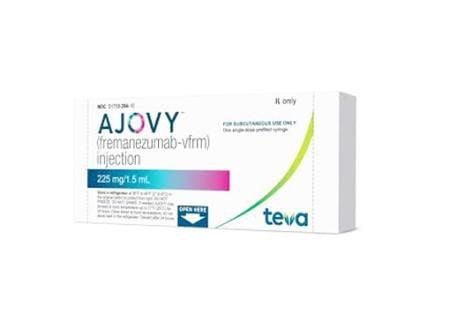This is an automatically translated article.
Preeclampsia is a disease in pregnant women during pregnancy. The disease can leave many serious complications, serious consequences if not detected and treated promptly and properly. One of the methods for early detection of preeclampsia and effective screening is the quantitative test sFlt1.1. What is preeclampsia? How dangerous?
Preeclampsia (TSG) is a syndrome with multiple organ dysfunction due to organ hypoperfusion, secondary to vasospasm and activation of endothelial factors. Pre-eclampsia accounts for 2-6% of pregnancies, in Vietnam, up to 2.34-4% of cases. More than 50% of deaths from preeclampsia are preventablePreeclampsia can be dangerous to the mother such as eclampsia, HELLP syndrome, acute pulmonary edema, cerebral hemorrhage, hemorrhage, liver rupture , acute renal failure, cardiovascular disease due to CHA, placental abruption. The fetus will suffer severe consequences of pre-eclampsia such as growth spurts, premature birth, respiratory failure, infection, even stillbirth.

Tiền sản giật có thể gây nguy hiểm cho mẹ như sản giật, hội chứng HELLP, phù phổi cấp,...
2. Quantification of sFlt1 in the diagnosis of preeclampsia
In order to effectively manage pre-eclampsia for pregnant women and ensure the safe development of the fetus, the quantitative test of sflt-1 is a must.sFlt1 (soluble fms-like tyrosine kinase – ) is considered an anti-angiogenic protein in the serum vascular endothelial growth factor receptor (VEGF receptor-1). sFlt1 and Placental growth factor (PIGF) are important factors that regulate angiogenesis in the placenta.
In a normal pregnancy, the concentration of PIGF increases during the first two trimesters and decreases until delivery, whereas sFlt1 is stable during the first two trimesters and increases steadily until delivery. Studies have shown an association of sFlt1 quantification and sFlt1/PIGF ratio with the onset of clinical and laboratory symptoms of preeclampsia. When the amount of sFlt1 increases, it will hinder the growth of endothelial vessels, reduce perfusion to the placenta, cause symptoms of preeclampsia, affect the health and safety of the fetus.
Accordingly, based on sFlt1 quantitative test results, this test will be performed with PlGF and calculate the ratio sFlt-1/PlGF. We can refer to the ratio of change by gestational age as follows as normal:
10 – 14 weeks: 5.21 – 22.7 – 57.3 15 – 19 weeks: 4.32 – 12.6 – 26.9 20 – 23 weeks: 2.19-6.08 – 14.8 24 -28 weeks: 1.01 - 3.8 - 16.9 29 -33 weeks: 0.945 - 4.03 - 86.4 34 - 36 weeks: 1.38 - 13.3 - 92.0 >37 weeks: 3.65 - 26.2 - 138 sFlt-1 is the specific test for detection Risk of pre-eclampsia in pregnant women:
In pre-eclampsia, sFlt-1 increases before the onset of clinical symptoms from 5 to 8 weeks should be used for early diagnosis of pre-eclampsia associated with decreased PlGF and ratio sFlt1/PlGF increased. Use differential diagnosis of pre-eclampsia in the case of pregnant women suffering from some medical diseases such as hypertension, nephrotic syndrome, systemic lupus erythematosus... before pregnancy but these diseases have similar symptoms. preeclampsia. Used in risk prognosis and management of preeclampsia.

sFlt-1 là xét nghiệm đặc hiệu cho phát hiện nguy cơ tiền sản giật ở mẹ bầu
Pregnant women with preeclampsia at gestational age < 32, the prognostic sFlt-1/PlGF ratio pregnancy outcome in 1-7 weeks. The accuracy of this test is superior to current methods and applications for risk stratification and management. Pregnant women with the ratio ≥85-> can prolong the gestational age by 1.2 weeks. Pregnant women with the ratio < 85-> can prolong the gestational age of 7.48 weeks. Thus, screening for preeclampsia is a must under the advice and indications of an obstetrician. At the right time, testing helps prevent diseases effectively and promptly for pregnant women, ensuring safety and comprehensive development for the fetus.
At Vinmec International General Hospital, pregnant women with suspected pre-eclampsia are given paraclinical tests such as: complete blood count, kidney function measurement, liver function measurement, coagulation test, blood group, total blood count. urinalysis. And some pregnancy tests such as: Obstetric monitoring, Doppler ultrasound and fetal movement monitoring on the machine. Especially for pregnant women at high risk of pre-eclampsia, PLGF can be tested in the first 3 months of pregnancy for early detection of preeclampsia.
If it is mild pre-eclampsia and the pregnant woman is able to self-monitor her condition, the doctor will consult carefully and the pregnant woman can go home to rest, re-examined once a week. Pregnant women at home need to monitor their blood pressure twice (morning and afternoon) every day and take note of the measured parameters corresponding to the timelines.
In addition, pregnant women need to monitor their weight, general health, take time to rest, limit work and be ready to notify the doctor about any unusual developments of the disease. In case the pregnant mother has pre-eclampsia but is in good health and has stable blood pressure, she can still go home and wait until she is full-term to go into labor as usual. If the condition is severe, potentially affecting the health of the pregnant mother, doctors will consider, if the prognosis is bad, it is necessary to induce labor within a few days.
Please dial HOTLINE for more information or register for an appointment HERE. Download MyVinmec app to make appointments faster and to manage your bookings easily.













